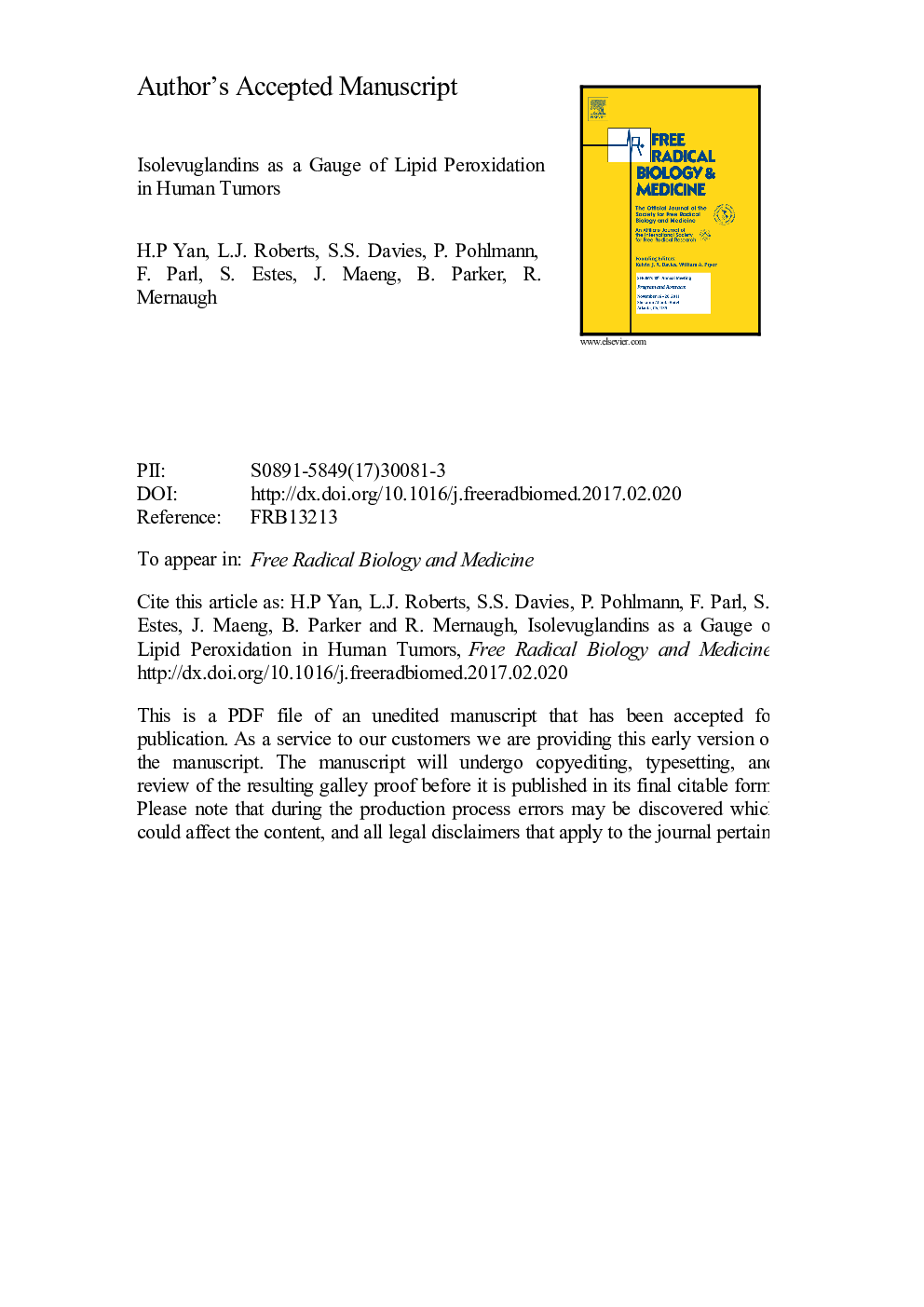| Article ID | Journal | Published Year | Pages | File Type |
|---|---|---|---|---|
| 5501768 | Free Radical Biology and Medicine | 2017 | 22 Pages |
Abstract
The cellular production of free radicals or reactive oxygen species (ROS) can lead to protein, lipid or DNA modifications and tumor formation. The cellular lipids undergo structural changes through the actions of enzymes (e.g. cyclooxygenases) or free radicals to form a class of compounds called Isolevuglandins (IsoLGs). The recruitment and continued exposure of tissue to ROS and IsoLGs causes increased cell proliferation, mutagenesis, loss of normal cell function and angiogenesis. The elevated concentration of ROS in cancerous tissues suggests that these mediators play an important role in cancer development. We hypothesized that tumors with elevated ROS levels would similarly possess an increased concentration of IsoLGs when compared with normal tissue. Using D11, an ScFv recombinant antibody specific for IsoLGs, we utilized immunohistochemistry to visualize the presence of IsoLG in human tumors compared to normal adjacent tissue (NAT) to the same tumor. We found that IsoLG concentrations were elevated in human breast, colon, kidney, liver, lung, pancreatic and tongue tumor cells when compared to NAT and believe that IsoLGs can be used as a gauge indicative of lipid peroxidation in tumors.
Related Topics
Life Sciences
Biochemistry, Genetics and Molecular Biology
Ageing
Authors
H.P. Yan, L.J. Roberts, S.S. Davies, P. Pohlmann, F.F. Parl, S. Estes, J. Maeng, B. Parker, R. Mernaugh,
